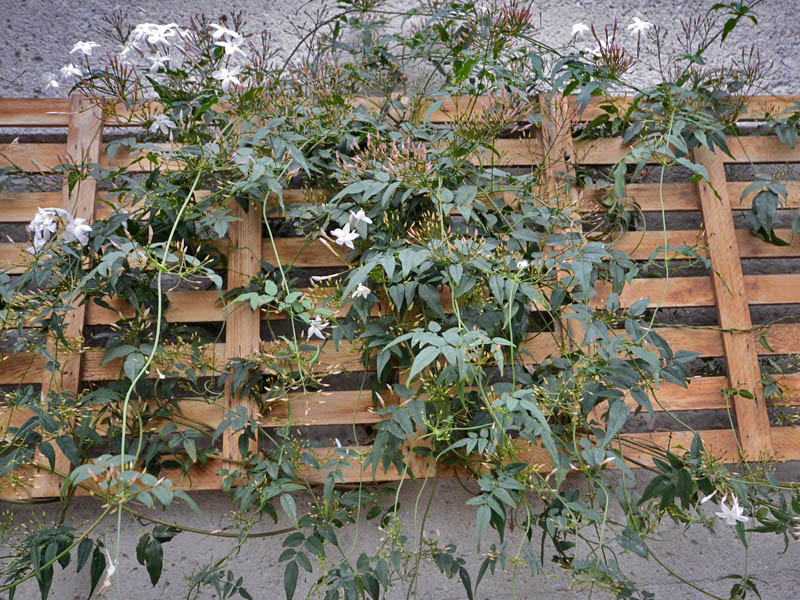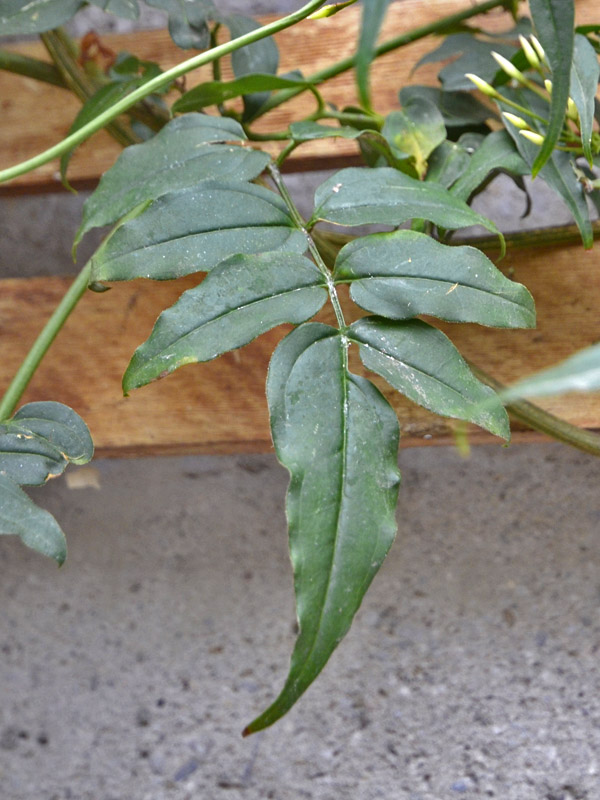
Tropicals, Woody > Jasminum > Jasminum polyanthum > Jasminum polyanthum
Jasminum polyanthum
Many-Flowered Jasmine
Origin: Native to Yunnan, China where it was discovered by the French missionary Jean Delavay in 1883. The national collection of Jasminum is held by Tynings Climbers in Tickenham, Somerset, England. Jasmine gets its name from the Persian word, 'yasmin', meaning fragrant flower.
| Family |
| Oleaceae |
| Genus |
| Jasminum |
| Species |
| polyanthum |
| Category |
| Tropicals, Woody |
| Type |
| Vine |
| Synonyms |
| Jasminum blinii |
| USDA Hardiness Zone |
| 10b |
| Canadian Hardiness Zone |
| Requires cool season protection under glass. |
| RHS Hardiness Zone |
| H2 |
| Temperature (°C) |
| 2 - 4 |
| Temperature (°F) |
| 35 - 40 |
| Height |
| Up to 6 m when supported. |
| Spread |
| 1 - 1.5 m |
Photographs
Description and Growing Information
Flowering Period
| General Description |
| Jasminum polyanthum or Many-Flowered Jasmine is an evergreen twiner with dark green, pinnate leaves and axillary clusters of fragrant, tubular, white flowers. |
| Landscape |
| Makes a low-maintenance climber on a trellis, wall or tree. Also good for containers or in city and courtyard gardens. |
| Cultivation |
| Grow in a frost-free, sheltered location, full sun to part shade, in well-drained soil. When growing under glass, use bright, filtered light and compost containing loam. Thin excess growth after flowering. |
| Growth |
| Fast |
| Pests |
| Possible pests include: aphids, mealybugs and scale insects. No diseases to note. |
| Flower/Leaf Bud Description |
| Pale pink, narrow, pointed. |
| Leaf Description |
| Pinnate, long and narrow, dark green. |
| Flower Description |
| Very fragrant, long, tube-shaped, white, five-petalled, star-like, up to 2 cm in diameter, in axillary, loose branching clusters. |
| Notable Specimens |
| The Royal Botanical Gardens, Burlington, Ontario, Canada. |
| Propagation |
| By semi-hardwood cuttings or layering in autumn. |



